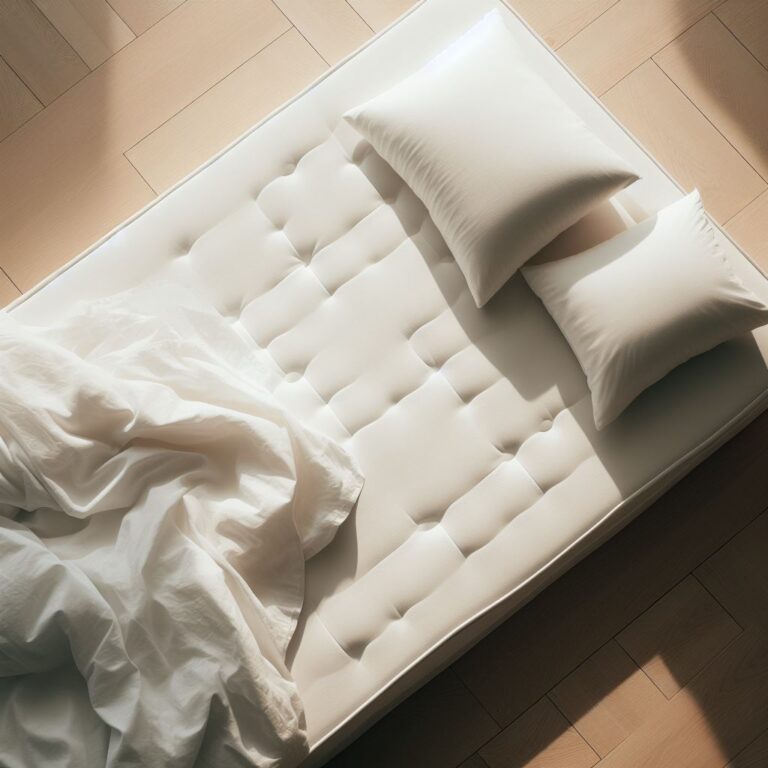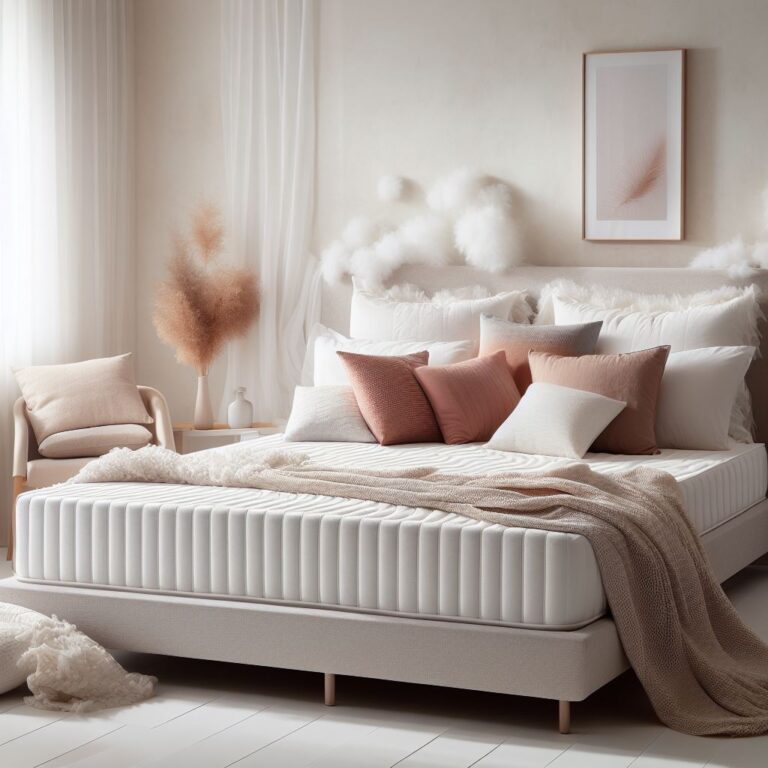- How To Choose Brentwood Home Oceano Luxury Hybrid - October 22, 2023
- How To Choose Amore Beds Hybrid - October 22, 2023
- How To Choose Stearns & Foster Lux Estate Cassatt - October 21, 2023

Understanding your sleep preferences
When it comes to understanding your sleep preferences, there are several factors to consider. Firstly, think about whether you are a light sleeper or a heavy sleeper. This will help determine the level of noise and light sensitivity that may affect your sleep. Additionally, consider if you tend to sleep hot or cold, as this can impact the type of mattress and bedding materials that would be most comfortable for you.
Another important aspect of understanding your sleep preferences is identifying any specific sleep issues or conditions you may have. For example, if you suffer from back or joint pain, you may require a mattress that provides extra support and pressure relief. Similarly, if you have allergies or asthma, it’s important to choose hypoallergenic materials that are resistant to dust mites and harmful allergens. By taking these factors into account, you can make an informed decision when selecting a mattress that caters to your individual sleep needs.
Identifying your specific needs and requirements
One crucial step in finding the perfect mattress is identifying your specific needs and requirements for a good night’s sleep. Everyone has unique preferences when it comes to their sleep experience, so it’s essential to consider what factors are most important for you. Are you someone who tends to sleep hot and needs a mattress with cooling properties? Or perhaps you have specific back or neck concerns that require extra support? By pinpointing your individual needs, you can narrow down your options and tailor your search to find the mattress that will provide the best possible comfort and support for you.
Another important aspect to consider when identifying your needs and requirements for a mattress is your sleep habits and patterns. Do you tend to sleep on your side, back, or stomach? This is crucial as different sleep positions require different levels of support and pressure relief. Side sleepers, for example, generally benefit from mattresses that offer contouring and cushioning for the hips and shoulders. On the other hand, back sleepers may prefer a mattress that provides adequate support for proper spinal alignment. Understanding your sleep habits and preferences will help you determine the right firmness level and materials that will enhance your overall sleep experience.
Considering your preferred sleep position
When it comes to considering your preferred sleep position, it is important to take into account what position you naturally find yourself in when you wake up in the morning. Are you a back sleeper, side sleeper, or do you prefer sleeping on your stomach? Each position has its own benefits and challenges. Back sleeping is often recommended for spinal alignment and reducing the risk of developing wrinkles and pressure points on your face. However, it may not be suitable for those who snore or have sleep apnea. Side sleeping, on the other hand, can help alleviate snoring and is often recommended for individuals with acid reflux. However, it may put pressure on your shoulder and hip if you don’t have the right mattress and pillow support. Stomach sleeping can be comfortable for some individuals, but it can strain your neck and spine if your pillow is too high.
Considering your preferred sleep position is a crucial factor in choosing the right mattress. Each sleep position requires different levels of support and pressure relief to ensure a good night’s sleep. Back sleepers generally benefit from mattresses that offer firmness and support, as it helps to maintain a neutral spine alignment. Side sleepers, on the other hand, would benefit from a mattress that provides contouring and pressure relief to cradle the shoulders and hips. Stomach sleepers usually require a mattress with medium-firmness to prevent their lower back from sinking too much. By identifying your preferred sleep position and understanding the specific needs associated with it, you can find a mattress that caters to your sleeping needs and provides optimal comfort throughout the night.
Determining your desired level of firmness
When it comes to choosing a mattress, determining your desired level of firmness is a crucial factor to consider. The level of firmness can greatly impact your quality of sleep and overall comfort. Some individuals prefer a softer mattress that allows them to sink in and feel cocooned, while others prefer a firmer surface for more support and spinal alignment. It is important to assess your own preference and comfort level to ensure you find the mattress that suits you best.
To determine your desired level of firmness, start by considering your own sleep habits and personal preference. Think about how you feel when you wake up in the morning – do you feel refreshed and well-rested, or do you wake up with aches and pains? If you prefer a softer feel, you might benefit from a mattress with more cushioning and a plush top layer. On the other hand, if you need more support and prefer a firmer feel, a mattress with a thicker, denser base layer might be more suitable for you. It is important to strike a balance between comfort and support to ensure a restful night’s sleep.
Assessing your body weight and shape
When it comes to choosing the right mattress, assessing your body weight and shape is an important consideration. The mattress you select should be able to provide adequate support and comfort based on your individual needs. Different body types require different levels of support to ensure proper spinal alignment and pressure relief.
For individuals who have a heavier body weight, a firmer mattress is generally recommended. This helps prevent sinking too far into the mattress, which can lead to discomfort and lack of support. On the other hand, if you have a lighter body weight, a softer mattress may be more suitable as it can contour to your body shape and provide a cozy sleep surface.
It’s crucial to take into account not only your weight but also your body shape when assessing your mattress needs. For example, individuals with broader shoulders or wider hips may require a mattress that offers enhanced support in these areas. By considering your body weight and shape, you can narrow down the options and select a mattress that will promote a restful night’s sleep.
Evaluating your partner’s sleep preferences
When considering the purchase of a new mattress, it’s important to take into account your partner’s sleep preferences as well. After all, a mattress is meant to provide comfort and support for both individuals sharing the bed. Begin by observing and discussing your partner’s sleeping habits. Are they a restless sleeper or do they tend to stay in one position throughout the night? Do they prefer a firmer or softer sleep surface? Understanding these preferences will help you select a mattress that ensures a restful night’s sleep for both of you.
Another factor to consider is whether your partner has any specific needs or requirements when it comes to their sleep environment. This could include considerations such as allergies or sensitivity to certain materials. Take the time to have an open and honest conversation with your partner to gain a better understanding of their needs. By prioritizing their preferences, you can find a mattress that caters to both of your sleep needs and promotes a harmonious atmosphere for a better night’s sleep.
Researching the materials and construction of the mattress
When researching the materials and construction of a mattress, it is important to understand the different components that contribute to its overall comfort and support. One key factor to consider is the type of foam used in the mattress. Memory foam, for example, can provide excellent pressure relief and contouring, while latex foam offers a more responsive and bouncy feel. Additionally, the density and thickness of the foam layers can significantly impact the mattress’s durability and level of support. Taking the time to familiarize yourself with the different foam options available will help you make an informed decision based on your comfort preferences and specific needs.
In addition to foam, the construction of the mattress also plays a crucial role in its performance. The way the layers are arranged, as well as the presence of additional support systems such as pocketed coils or a base foam layer, can affect the mattress’s ability to distribute weight evenly and provide adequate spinal alignment. Understanding the construction details will enable you to assess whether a particular mattress design is suitable for your sleep style and preferences. It is also worth considering the quality of the construction and the durability of materials used, as a well-constructed mattress can potentially provide many years of restful sleep. By thoroughly researching the materials and construction of a mattress, you can make an informed decision and choose a mattress that will provide you with the comfort and support you need for a good night’s rest.
Comparing the different features and benefits of the Helix Sleep Midnight Luxe
The Helix Sleep Midnight Luxe offers a range of features and benefits that set it apart from other mattresses on the market. One of its key features is its personalized sleep design, which is customized based on your specific needs and preferences. This mattress uses a unique approach to comfort by combining different layers of foam and pocket coils, providing a balance of support and pressure relief.
Additionally, the Helix Sleep Midnight Luxe is designed to regulate temperature while you sleep. Its hybrid construction allows for better airflow, preventing heat from being trapped and ensuring a cool and comfortable sleep experience. Along with its temperature regulation, this mattress also provides motion isolation, which means you won’t be disturbed by your partner’s movements during the night. Overall, the Helix Sleep Midnight Luxe offers a combination of personalized comfort, temperature regulation, and motion isolation, making it a top choice for those seeking a high-quality sleep experience.
Reading customer reviews and feedback
Reading customer reviews and feedback is an essential step when considering a new mattress purchase. These reviews provide valuable insight into the actual experiences of other customers, allowing you to gain a better understanding of the product’s performance and durability. By taking the time to read through a variety of reviews, you can gather information regarding the mattress’s comfort, support, and overall quality.
Furthermore, customer feedback offers a unique perspective on the mattress’s ability to meet specific preferences and requirements. While each individual’s experience may vary, reading multiple reviews can help you identify common themes and gauge whether the mattress aligns with your own sleep needs. Pay attention to reviews from individuals who share similar sleep patterns or concerns, as their experiences may serve as a helpful point of comparison. Additionally, reviews often highlight any potential drawbacks or issues that you may want to consider before making a purchasing decision.
Making an informed decision based on your research and personal preferences
When it comes to making an informed decision about choosing a mattress, conducting thorough research is paramount. By delving into the available information and understanding your personal preferences, you can ensure that you select the right mattress for your needs. Consider exploring various sources such as online reviews, manufacturer websites, and even visiting local retailers to gather comprehensive information about different mattress options.
As you conduct your research, it is important to keep your personal preferences in mind. Each individual has unique sleep requirements and what may work for one person may not be suitable for another. Think about factors such as your preferred sleep position, desired level of firmness, and any specific needs or requirements you may have. By aligning your research with your personal preferences, you will be better equipped to make an informed decision and find a mattress that promotes a restful night’s sleep.
How can I understand my sleep preferences?
Understanding your sleep preferences involves considering factors such as sleep position, firmness level, body weight and shape, and any specific needs or requirements you may have.
How do I identify my specific needs and requirements for a mattress?
Identifying your specific needs and requirements involves considering factors such as any back or joint issues, temperature regulation preferences, and any allergies or sensitivities.
Why is considering my preferred sleep position important?
Considering your preferred sleep position is important because it affects the type of support and alignment your body needs during sleep.
How can I determine my desired level of firmness for a mattress?
Determining your desired level of firmness involves considering factors such as personal preference, body weight, and any specific comfort needs you may have.
Why should I assess my body weight and shape when choosing a mattress?
Assessing your body weight and shape is important because it determines how much support and pressure relief you may need from a mattress.
Should I consider my partner’s sleep preferences when choosing a mattress?
Yes, considering your partner’s sleep preferences is important if you share a bed, as you will want to find a mattress that accommodates both of your needs for a comfortable sleep.
What should I research about the materials and construction of a mattress?
When researching the materials and construction of a mattress, you should look into the quality and durability of the materials used, the type of support system, and any additional features that may affect your comfort.
Why is it important to compare the different features and benefits of a specific mattress, such as the Helix Sleep Midnight Luxe?
Comparing the features and benefits of different mattresses allows you to find the one that aligns best with your specific sleep preferences and needs.
How can reading customer reviews and feedback help in my decision-making process?
Reading customer reviews and feedback can provide valuable insights into the actual experiences of other users, helping you gauge the mattress’s performance, durability, and overall customer satisfaction.
What factors should I consider when making a final decision on a mattress?
When making a final decision on a mattress, you should consider your research, personal preferences, budget, and any additional factors that are important to you, such as warranty or return policies.






